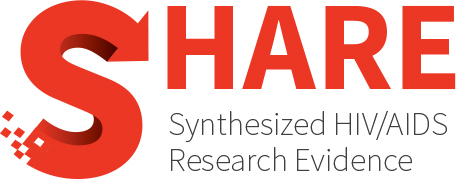Category Archives: Prevention, Engagement and Care Cascade
Impact of the COVID-19 pandemic on HIV healthcare service engagement, treatment adherence, and viral suppression in the United States: A systematic literature review
The COVID-19 pandemic has necessitated adaptations in how healthcare services are rendered. However, it is unclear how these adaptations have impacted HIV healthcare services across the United States. We conducted...
Digital directly observed therapy to monitor adherence to medications: A scoping review
Background: Technology-based directly observed therapy (DOT) is more cost-effective and efficient compared with in-person monitoring visits for medication adherence. While some evidence shows these technologies are feasible and acceptable, there...
Digital sexually transmitted infection and HIV services across prevention and care continuums: Evidence and practical resources
Increased demand for sexual health services (including prevention and treatment) have spurred the development of digital STI/HIV services. Earlier advances in testing technologies opened the door for self-testing and self-sampling...
Pleasure and PrEP: A systematic review of studies examining pleasure, sexual satisfaction, and PrEP
Pre-exposure prophylaxis (PrEP) is an effective form of Human Immunodeficiency Virus (HIV) prevention for people at potential risk for exposure. Despite its demonstrated efficacy, PrEP uptake and adherence have been...
Leveraging resilience-supportive strategies to enhance protective factors in young sexual minority men: A scoping review of HIV behavioral interventions implemented in high-income countries
Behavioral HIV interventions focused on strengthening young sexual minority men’s (SMM) internal (assets) and external (resources) protective factors are promising, yet their evaluation as resilience-supportive strategies to minimize or negate...
Health-related needs reported by adolescents living with HIV and receiving antiretroviral therapy in sub-Saharan Africa: A systematic literature review
INTRODUCTION: Adolescents living with HIV (ALHIV) on antiretroviral therapy (ART) have specific health needs that can be challenging to deliver. Sub-Saharan Africa (SSA) is home to 84% of the global...
Elevated neopterin in tuberculosis and co-infection with HIV and the effect of treatment: A systematic review, meta-analysis, and meta-regression
BACKGROUND: Neopterin (NEO) is a marker of immune stimulation. Increased NEO levels have been associated with autoimmune diseases, infections, and malignancies. Studies of NEO alterations in tuberculosis (TB) with or...
The proportion of loss to follow-up from antiretroviral therapy (ART) and its association with age among adolescents living with HIV in sub-Saharan Africa: A systematic review and meta-analysis
BACKGROUND: Human immunodeficiency virus (HIV) remains a global health threat, especially in developing countries. The successful scale-up of antiretroviral therapy (ART) programs to address this threat is hindered by a...
Yellow fever vaccine safety in immunocompromised individuals: A systematic review and meta-analysis
BACKGROUND: Yellow fever is an arbovirus with variable severity, including severe forms with high mortality. The vaccination is the most effective measure to protect against the disease. Nonserious and serious...
Implementation science for the prevention and treatment of HIV among adolescents and young adults in sub-Saharan Africa: A scoping review
Despite many evidence-based adolescent and young adult (AYA) HIV interventions, few are implemented at scale in sub-Saharan Africa (SSA). A growing implementation science literature provides important context for scaling up...
Barriers and facilitators to HIV prevention interventions for reducing risky sexual behavior among youth worldwide: A systematic review
BACKGROUND: Interventions aimed at reducing risky sexual behavior are considered an important strategy for averting Human Immunodeficiency Virus (HIV) infection among youth (15-24Aÿyears) who continue to be at risk of...
